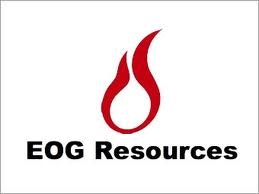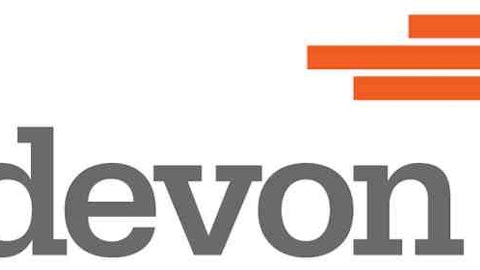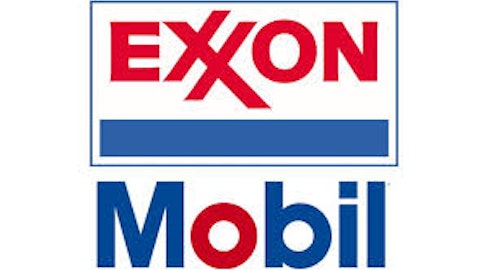EOG Resources Inc (NYSE:EOG)’s latest slide deck has an interesting scrap of information. Its significance was highlighted by a late question buried at the end of its quarterly conference call. Mark Papa revealed that EOG is seeing signs of weakness in Eagle Ford condensate pricing. If condensate prices weaken significantly, the impact on Eagle Ford producers could be significant, providing double trouble in this period of weak natural gas pricing.
Some good information can be found on the internet, if you’re willing to dig for it. Message boards and investment sites allow retail investors to share information, digging up scuttlebutt on the companies they follow. A grain of salt is sometimes required, but a remarkably wide array of information is available to those that look for it.
A recent exchange on the Motley Fool’s message boards called attention to EOG Resources Inc (NYSE:EOG)’s most recent slide deck and its quarterly conference call. One particularly well-informed poster questioned if condensate pricing might be ready for a drop based on comments made by EOG Chairman and CEO, Mark Papa, on EOG’s earnings call.
EOG Resources Inc (NYSE:EOG) led the current move by Independent E&Ps into the oil shale, and Papa is a big oil bull and natural gas bear. In fact, EOG is bearish very long term on natural gas. However, some feel that gas is due for a correction as supplies diminish as a result of the industry reducing rig counts on the major gas producing shales.
Papa thinks that’s wrong. Dead wrong.
As natural gas prices fell, independents shifted drilling to ‘wet’ gas acreage that produced natural gas liquids (NGLs) to supplement falling gas revenue. NGL pricing subsequently collapsed under the weight of the resulting NGL oversupply, particularly in the ethane market. Papa’s quick to point out that the NGL crunch has simply led to more and more combined production.
A ‘combo’ play refers to acreage that produces both oil and gas, typically in the realm of a 50:50 mix. The oil off the wells boost returns enough, raising return on investment and making the wells economic.
The Barnett combo play’s been particularly important for large cap independents with predominantly gas-oriented acreage portfolios, most notably Devon Energy Corp (NYSE:DVN). Everyone has some stake in the Barnett, but Devon’s still valuable Barnett acreage is huge, and the combo acreage provides some all-important oil to offset weakening gas revenue.
That allows companies like Devon Energy Corp (NYSE:DVN) to keep drilling their Barnett acreage, preventing the draw down in supply some predict and keeping a roof on gas prices for the foreseeable future.
Condensate too?
More interesting was a question by a Morgan Stanley analyst about condensate. When asked for some color on condensate pricing, Papa replied that there was “definitely a difficulty in marketing the condensate in the Eagle Ford area.” That’s a scary data point.
Condensate is usually booked as oil when companies report production. It also usually prices close to oil. These are larger hydrocarbons, with a composition similar to gasoline. It still needs refining, of course, and the difficulty is that Texas refinery capacity for the stuff is low.
That’s apparently leading to a build-up of condensate in Texas, if Papa’s comment is any indication. That could be significant for some of the Eagle Ford producers. The trend is a major oil production source that EOG’s predicting could surpass the Bakken in a couple of years.
That makes it a very hot trend that everyone’s chasing, but the Eagle Ford is not homogeneous. There’s a lot of variation in oil content in different regions. The northern regions are rich in oil, while the southern edges of the formation are gas rich. Intervening regions are condensate rich.
If you’re in the wrong neighborhood, you’re not getting light oil, the most valuable product. You’re producing condensate, or worse yet, gas. If condensate prices soften that could squeeze some operators’ margins.
A figure in EOG’s latest slide deck makes that point pretty clearly (see Figure 1). The figure charts the average API gravity of oil produced by all producers with greater than 5 million barrels of cumulative Eagle Ford production.

API gravity is inversely proportional to density. Heavy crude is low API; light crude is in the 38 to 45 range. Condensate is essentially very light oil, with an API above 45. Looking at the chart, it becomes clear that much of the liquid produced in the Eagle Ford is actually condensate, not light oil.
That could become significant for companies like Chesapeake Energy Corporation (NYSE:CHK) if condensate prices were to weaken. Chesapeake’s built a strong acreage portfolio in emergent oil shales, and its Eagle Ford acreage position (#2 in the industry) is its best oil-bearing asset.
Look at that figure again. While it’s difficult to figure out exactly who’s who, it’s clear that every large producer except EOG is producing predominantly condensate. So it’s tough to escape the conclusion that much of Chesapeake’s Eagle Ford liquids production must really be condensate.
If condensate pricing weakens, some of the significant Eagle Ford gains could be erased. The impact of that could be very damaging for the industry. Simultaneously low gas, NGL, and condensate prices are sure to have an impact on anyone not moving black oil through their pipes.
It points out one problem that investors always face when comparing companies: transparency in reporting and a lack of industry standards for some of that reporting. Many companies don’t provide enough granularity in their production stats to figure out what mix of products exists in their product stream.
Up until natural gas prices plunged, many companies reported NGLs as liquids. Now most break liquids out and report oil and NGL production independently. Likely that’s because analysts bugged them enough that they complied.
That “oil” is not all the same. Some may be heavy, some may be light, and some may be condensate. These are really different products that price independently, and that impacts revenue. Investors are left to puzzle it all out until analysts successfully pressure producers into providing more information.
If Papa’s side comment on condensate pricing becomes reality, investors in some of the Independents producing condensate in the Eagle Ford could be in for a rude replay of the NGL crash, but this time in condensate. Investors should be wary of the trend, especially if it crops up in other basins.
The article Could Condensate Pricing in the Eagle Ford Slip? originally appeared on Fool.com and is written by Peter Horn.
Copyright © 1995 – 2013 The Motley Fool, LLC. All rights reserved. The Motley Fool has a disclosure policy.






